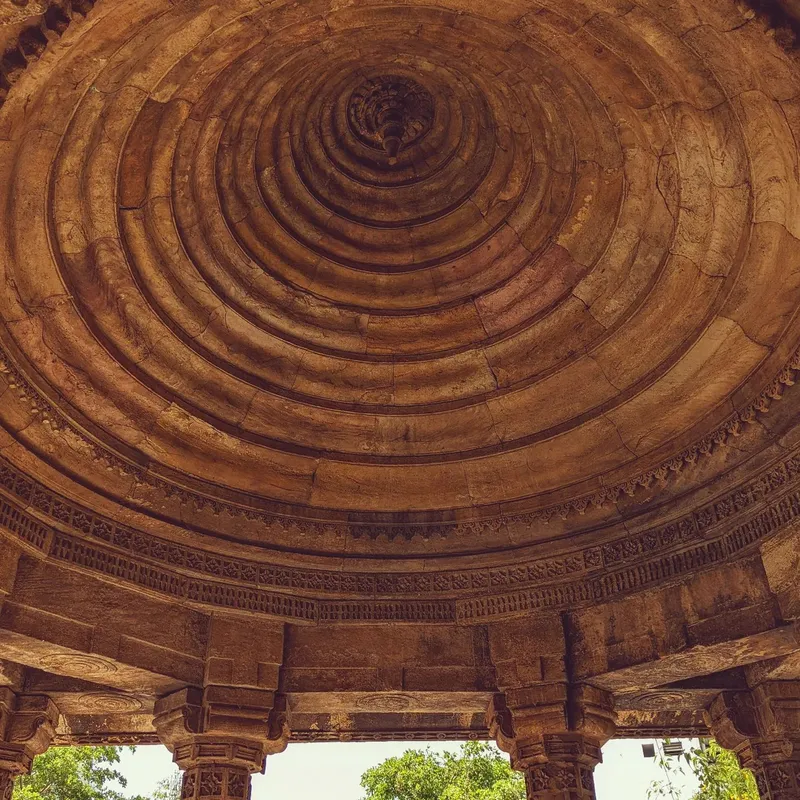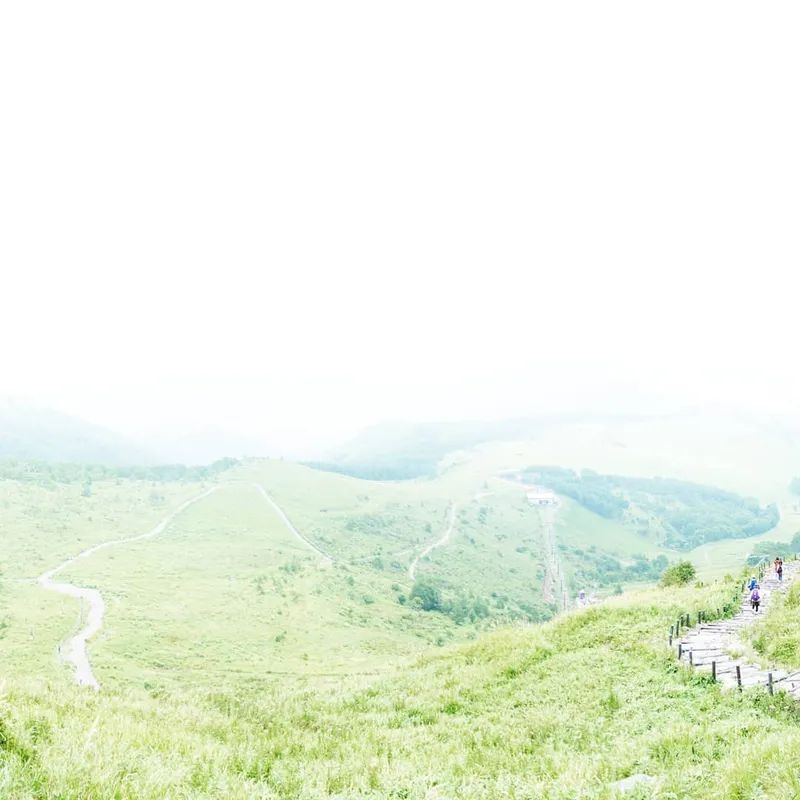Aphantasia Is No Creativity-Killer
I turned my back to art, then turned again
Marco Giancotti,

Marco Giancotti,
Cover image:
Borders of the Heart, Marco Giancotti
When I was in junior high school, every child in Italy had a "school diary" to keep track of homework, deadlines, and teachers' notes. Mine was filled with drawings—fantastic and physically-improbable great-swords, muscular Super Saiyan, and geometrical patterns. I spent more time drawing than most of my classmates, and I wasn't half bad at it. I was no precocious Picasso, but my friends would sometimes ask to see my works and commission new ones.
I was also into writing poetry, reading books, and all things artistic: one thing I didn't care for, though, was math and science.
As I grew up, I began to feel like I was hitting against a wall. Granted, I could draw a predefined list of subjects well enough, but I couldn't easily come up with new, original imagery.
I wanted to surprise myself with fantastic beasts and conjure characters whose stories had not been told yet—but I couldn't. Time and again, I sat in front of a blank page waiting for some ecstatic rapture to begin moving my pen into something truly new, and it never happened. I didn't fare much better with prose. Unless I had a clear idea or inspiration to begin with, I found myself staring at a void made of my own ineptitude.
My handle name as an adolescent, when I was just beginning to form an identity on the internet, was something cringey like i_am_not_creative. I don't think I ever thought much about it—such unpleasant reflections were to be avoided at any cost—but somewhere deep I must have decided that I wasn't cut for creative work. It hurt to see myself fail consistently at something I'd believed to be my strength.
At the same time, I began to learn the pleasures of mathematics and physics. Its inevitability felt reassuring. There was no blank page in science, only a never-ending wellspring of hard facts and assumptions, on which I could apply reason to build new understanding.
By the time I turned 18, I had left behind the drawing and the poetry to become the quintessential rationally-minded type. I did well in the scientific disciplines. I chose to study physics at University, then specialized in astronomy and astrophysics, then went through a doctorate in astrodynamics. For more than a decade I lived in a world of evidence-based reason and pragmatism. During that time, my fascination for creative work never completely faded, but I only dared try my hand at fiction, on and off, to my constant dissatisfaction. It felt too hard.

Now I know that I have this neurological condition called "aphantasia"—the absence of any "mind's eye" (I wrote about it here). Picturing nothing but a blank, featureless world when creating something from scratch, then, is not the result of panic, lack of practice, or overthinking. It's my natural state.
But the most surprising thing with aphantasia is how I was able to misuse words like "mental picture" for over three decades.
When you learn the meaning of a word, most of the time you have ways to cross-check that you got it right. You might get it wrong the first time, but every time you see the word in use again you'll be able to triangulate and home in to the "real" meaning (to the extent that a word can have a "real" meaning). Others may correct you, show you examples, and describe it more accurately until you get it. This gradual learning process is very hard, if not impossible, with words belonging to the realm of inner experience.
All my life, people around me would say things like "I can picture his expression when he finds out," and I would nod in approval. When mindfulness instructors told me to close my eyes and visualize myself sitting in a peaceful beach, I just... closed my eyes and thought about being in a peaceful beach.
None of that sounded strange to me because, at some point in my early childhood, I had filed all expressions of "mental seeing" under the definition of "thinking about something and what it feels like to be looking at it". The latter was easy for me, so the definition seemed to be working fine. No one could peer into my mind and correct me, saying "no, Marco, that's not what I meant by seeing mentally".
I can conjure in my head the feeling of seeing the thing, and I can have a sense of its shape and its position relative to me. That, I concluded, was mental visualization. Of course I never paused to analyze those sensations objectively, never wondered how similar or different they were from actual seeing with one's eyes. Only after learning about aphantasia I realized that none of what goes on in my imagination is literally visual or sensory. When I imagine a sailboat, the sailboat is there in my mind, but it has no contours, no color, no texture.
This redefinition of the meaning of mental imagery was made harder by the co-existence of a "spatial sense". I have a very strong sense of direction, and a quick glance at the map of an unfamiliar area is enough for me to keep walking confidently for a while. If I close my eyes and imagine my childhood house, I'm able to probe it thoroughly, visit each room in turn, and point with my finger at this and that piece of furniture. When I do that, my eyes move under my eyelids, because the house is there for me as a topological, three-dimensional object, and I can pretend to look around it.
Again, none of this imaginary probing is visual: if you ask me whether, in my mind, the bedroom is brightly lit or in complete darkness, the very question is meaningless to me. Yet, only a few years ago, I would have told you that I could mentally see the house. I didn't know that vision and spatial sense were entirely separate functions of the brain.

When I took my first VVIQ questionnaire, designed by psychologists to measure the vividness of one's mental imagery, I turned out as mostly but not totally aphantasic. Some questions were easy, like "How clearly can you imagine the exact contours of the face, head, shoulders and body of a familiar person?". My answer to those was a straightforward "not at all".
The questions with a stronger spatial component were trickier. For example, when asked to imagine the sun setting over the sea, I saw no colors or shapes, but I did get a spatial sense of the flat expanse of the sea and of the sphere of the sun. It wasn't a picture but—because I had equated that spatial sense with the words "seeing mentally" until that point—I answered that I was able to vaguely visualize it.
Only after much more introspection I learned to distinguish actual mental images from place-like imagination. My VVIQ now returns a verdict of full aphantasia.
Apart from non-visual 3D objects, what do I imagine? In fact, do I even have an imagination? (Someone recently asked me if I was a philosophical zombie, a possibility that I found hard to reject convincingly.)
The best way I can describe my imagination is a web of meaning. It is mostly abstract and disembodied, but it is all connected. When given a prompt—a word, a sound, an (actual) image—I immediately recall a lot of information and feelings I've accumulated about it. From that, it is very easy for me to pull at the threads and expand in any direction. But I need something to start with, hence the hard time blank pages give me.
To be clear, I'm convinced that this "web of meaning" way of imagining is something everyone does, aphantasics or not. But it might be a bit easier for someone like me to describe, because I don't have the extra, attention-grabbing feature of mental pictures popping suddenly in my mind. Aphantasia simplifies the landscape a little, makes things easier to separate.
Learning about aphantasia hasn't made the act of drawing or conjuring visual ideas any easier for me. A blank page is still perfectly blank to me, and arbitrary details are quick to escape my memory. But things are a little better. Now that I know what I'm weak at, I can work around it. There is much less stress involved in the process.
For one thing, aphantasia bears no effect on any kind of art involving the use of a reference. In 2016 I got into artistic photography (all the images in this post are mine). More recently I returned to drawing daily for a couple of years, and my technique has improved drastically.

For a while I felt guilty for using reference images or objects while drawing. I felt like a cheater, someone resorting to a crutch to make up for their mediocrity. Then I thought about it for five minutes and realized that a majority of all visual artists throughout history routinely used references.
The Impressionist movement was all about getting out en plein air and painting what was in front of them. Some of the most renowned paintings are portraits—think of the Mona Lisa, Rembrandt's self-portraits, or the Girl with a Pearl Earring. Most drawing tutorials on YouTube assume the use of one or more reference images as a matter of fact. This varies from artist to artist, but I think it's safe to say that not all great artists appeared to be confident with creating entirely new, fantastic subjects out of thin air.
Many artists do put original elements in their art that seem to come directly from their own imagination. This is harder for me to emulate, but it seems to be mostly a matter of convenience, easily replaced by an external reference, rather than a show-stopper.
As I studied drawing techniques, I also learned that most illustrators don't begin drawing their art in its final form right away, like printers do. Instead they to go by iterations, laying down a very quick, sketchy first draft, then gradually refining the drawing and adding detail, returning over and over to each spot to gradually improve the whole picture.
(Of course there are printer-like exceptions like Kim Jung Gi, who almost certainly wasn't aphantasic, but he was revered as something of a genius even by non-aphantasic professionals.)
This iterative approach is perfect for me, because aphantasia only makes the initial, rough sketch difficult, not the 99% of subsequent work of adding and tweaking.
A good sense of proportion seems to be more important, when drawing, than whatever the source of the idea was. If you're a beginner, it's easy to mess up the relative sizes and positioning of the parts, so that the whole comes out wonky and amateurish. This is true even when simply copying a reference image you have in front of your eyes.
Especially when drawing complex subjects like people and animals, the key skill is seeing what's already on the paper and adding new strokes or colors that harmonize well with that, not having the "right" image available to refer to. Considering that I've kept improving consistently at this over time, I believe that aphantasia has little bearing on the sense of proportion. It's a matter of eyeball-powered observation and deliberate practice.
Writing, fiction or not, comes even easier with the right approach. Words are inherently more abstract than pictures, and my intact "web of meaning" kind of imagination can evoke all the links and details I want.
Sure, if you ask me to describe a never-before-seen Pokemon, on the spot, I will struggle. I need something to get started with. I won't struggle for long, though, because I've built up a catalog of visual and textual references from existing media that I can dip into to stimulate my synapses. Once the initial idea is sparked, my imagination can metabolize and flow freely in weird new directions that are deeply mine.

All this might sound a bit confusing. Does aphantasia hinder creativity or not? Wasn't that the creative wall I hit in my youth?
Although one can't say for sure, I think that the answer to both questions is more a "no" than a "yes". Aphantasia does prevent certain uses of imagination, certain creative pathways that specific artists might rely on for their work. In that sense, there are approaches to art that I can't even hope to emulate. Art is an immensely varied and flexible category, though, and creativity is about doing things differently from others in the first place.
An aphantasic artist may not be able to compete with, say, Jackson Pollock or Gustav Klimt at their own styles, but who can? I believe that the same aphantasic person can find their own approach, even one that Klimt or Pollock would be hard pressed to replicate.
My problem when I gave up art in my teens wasn't really my aphantasia, but my expectations for what I should be able to produce. I thought that staring at the blank page was the right way to begin a piece, and it didn't occur to me that there may be other routes to self-expression. If anything, I lacked imagination about the ways to find my creativity. The good news is that this last part is discoverable, and no longer a problem for me.
Now I create something every day. My drawings and photos are squarely in the amateur category, and my focus on writing means that they'll probably stay there. But the pleasure they give me, even in little bursts! I hope no one will ever give up on that pleasure just because of aphantasia. It could mean depriving the world of something good and unique. ●
This post is included in the List of Introspective Descriptions.
Cover image:
Borders of the Heart, Marco Giancotti